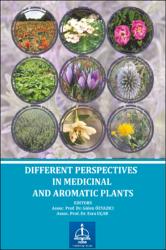| dc.contributor.author | Şentürk, İlknur | |
| dc.date.accessioned | 2023-04-12T06:51:16Z | |
| dc.date.available | 2023-04-12T06:51:16Z | |
| dc.date.issued | 2022 | tr |
| dc.identifier.citation | İlknur ŞENTÜRK1
1Sivas Cumhuriyet University, Faculty of Engineering, Department of Environmental | tr |
| dc.identifier.isbn | 978-625-6955-52-3 | |
| dc.identifier.uri | https://hdl.handle.net/20.500.12418/13611 | |
| dc.description.abstract | Rapid urbanization and industrialization have brought environmental
pollution. Pollution is even more significant in areas close to industrial
areas. Among various organic and inorganic pollutants, heavy metal
pollution poses a great threat to the current environment. Because heavy
metals tend to stay in the environment for a long time. It takes a long
time for them to disappear from nature as a result of chemical and
microbial degradation. This feature increases the accumulation and this
situation poses a great risk in terms of environment and animal health.
Metal concentration above a certain threshold limit will have a toxic
effect, thus reducing the quality of soil as well as agricultural products.
Therefore, this problem should be handled in the best way and a
sustainable environmentally friendly way for treatment should be
followed.
It is a worldwide popular and accepted method used for cleaning
especially heavy metal-contaminated areas with medicinal and
aromatic plants due to its sustainability, non-toxicity, not being
included in the food chain because they are not preferred as food due to
their essential odor, aesthetic, and natural appearance, environmentally
friendly and applicable, accepted by the local people as an aesthetic and
safe strategy, and being a low cost and natural method.
Scientists dealing with medicinal and aromatic plants have shown
interest in using these plants for phytoremediation purposes in polluted
areas. For this reason, studies on this subject have been going on for a long time. In reality, it is used in the perfumery, fragrance,
aromatherapy, etc. Such plants, which are of extreme economic
importance in areas, are also an excellent choice for the remediation of
heavy metal-contaminated areas. In this chapter, this subject will be
examined in detail, and examples of work in this field will be given. | tr |
| dc.language.iso | eng | tr |
| dc.publisher | İKSAD Publications | tr |
| dc.rights | info:eu-repo/semantics/openAccess | tr |
| dc.subject | BIOREMEDIATION, MEDICINAL AND AROMATIC PLANTS, PHYTOREMEDIATION, HEAVY METAL | tr |
| dc.title | BIOREMEDIATION OF HEAVY METAL CONTAMINATED SITES BY MEDICINAL AND AROMATIC PLANTS: PHYTOREMEDIATION BEHAVIOR, DIFFERENT PERSPECTIVES IN MEDICINAL AND AROMATIC PLANTS | tr |
| dc.type | bookPart | tr |
| dc.relation.journal | DIFFERENT PERSPECTIVES IN MEDICINAL AND AROMATIC PLANTS | tr |
| dc.contributor.department | Mühendislik Fakültesi | tr |
| dc.contributor.authorID | 0000-0002-8217-2281 | tr |
| dc.identifier.endpage | 349 | tr |
| dc.identifier.startpage | 323 | tr |
| dc.relation.publicationcategory | Uluslararası Kitap | tr |















